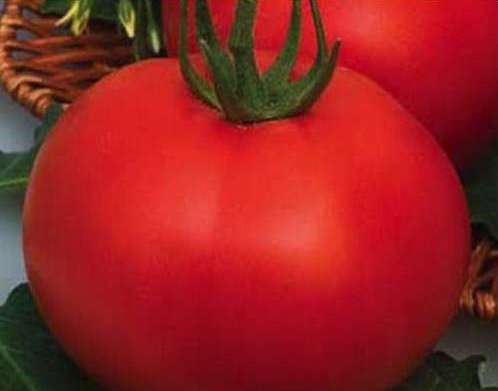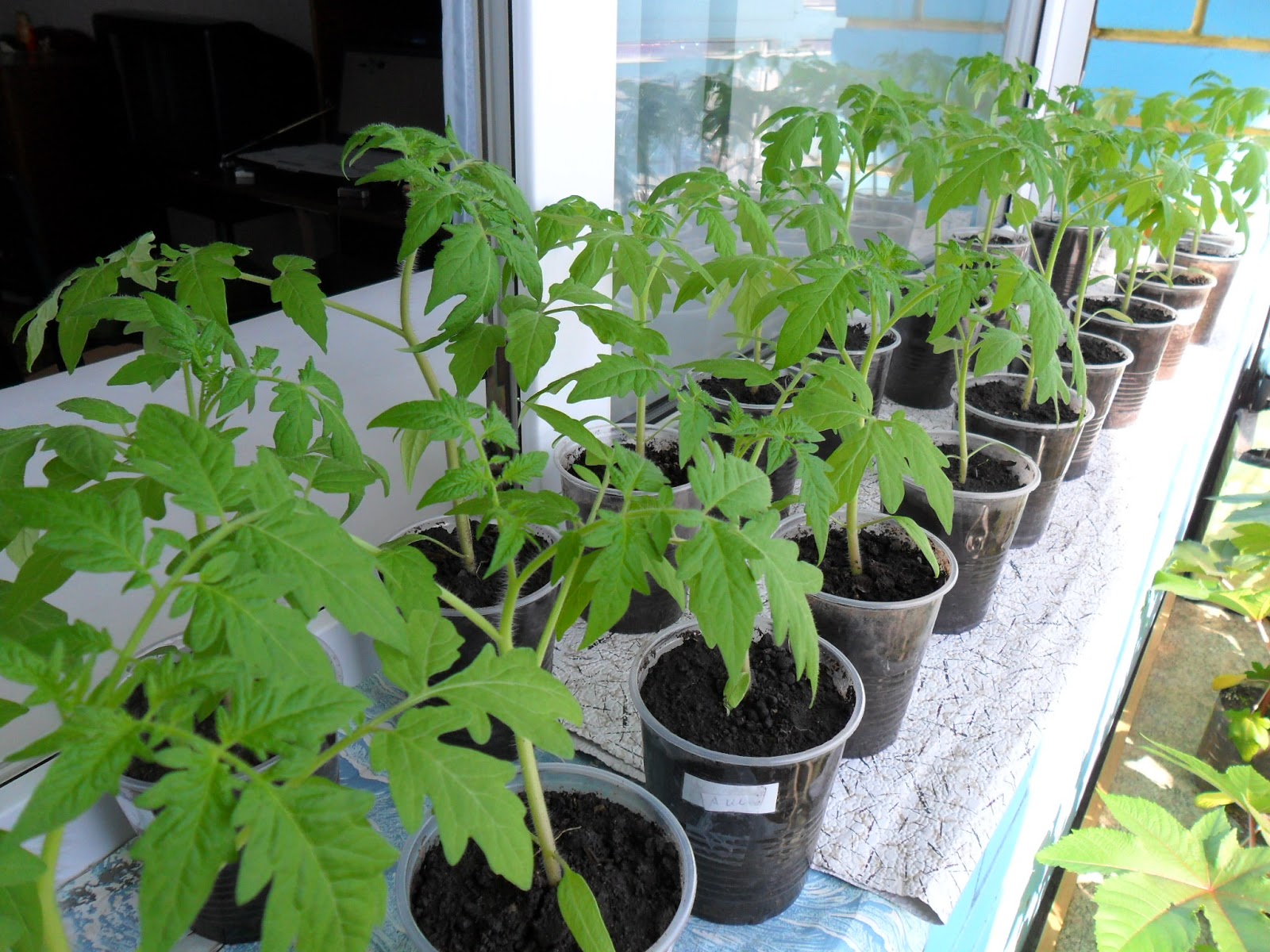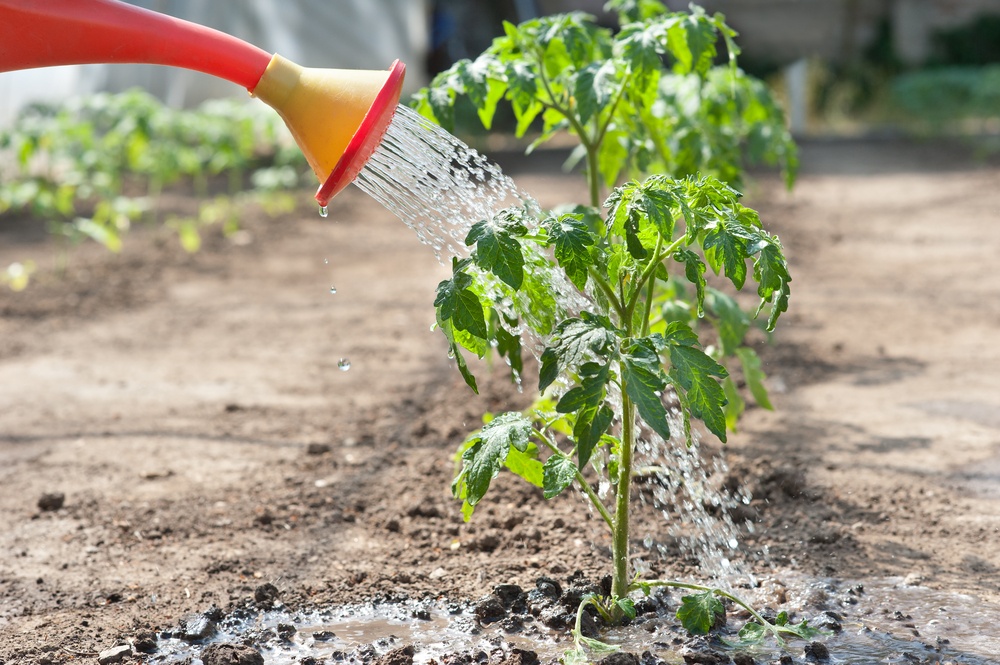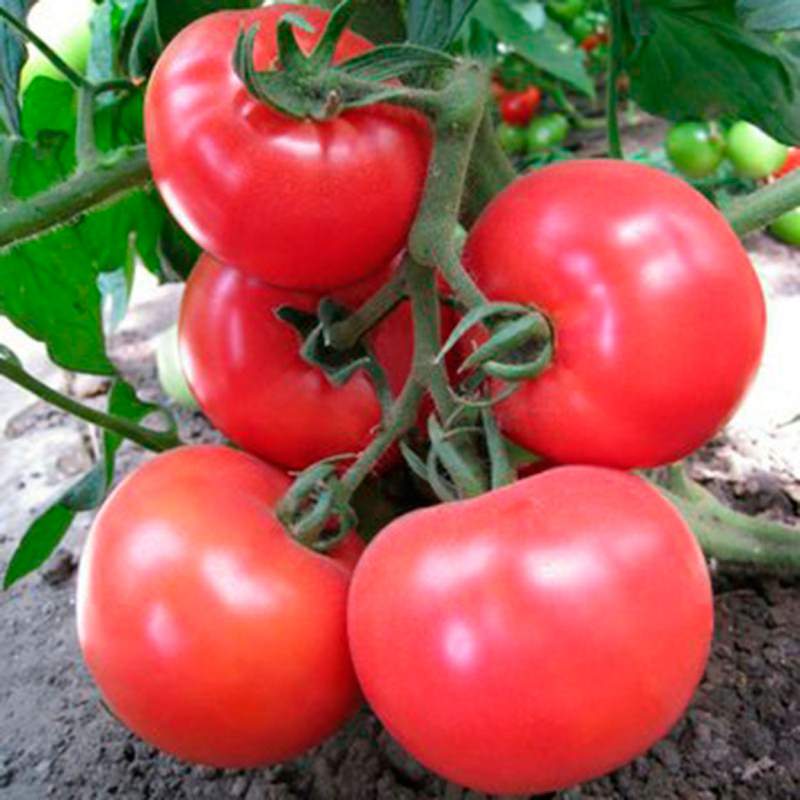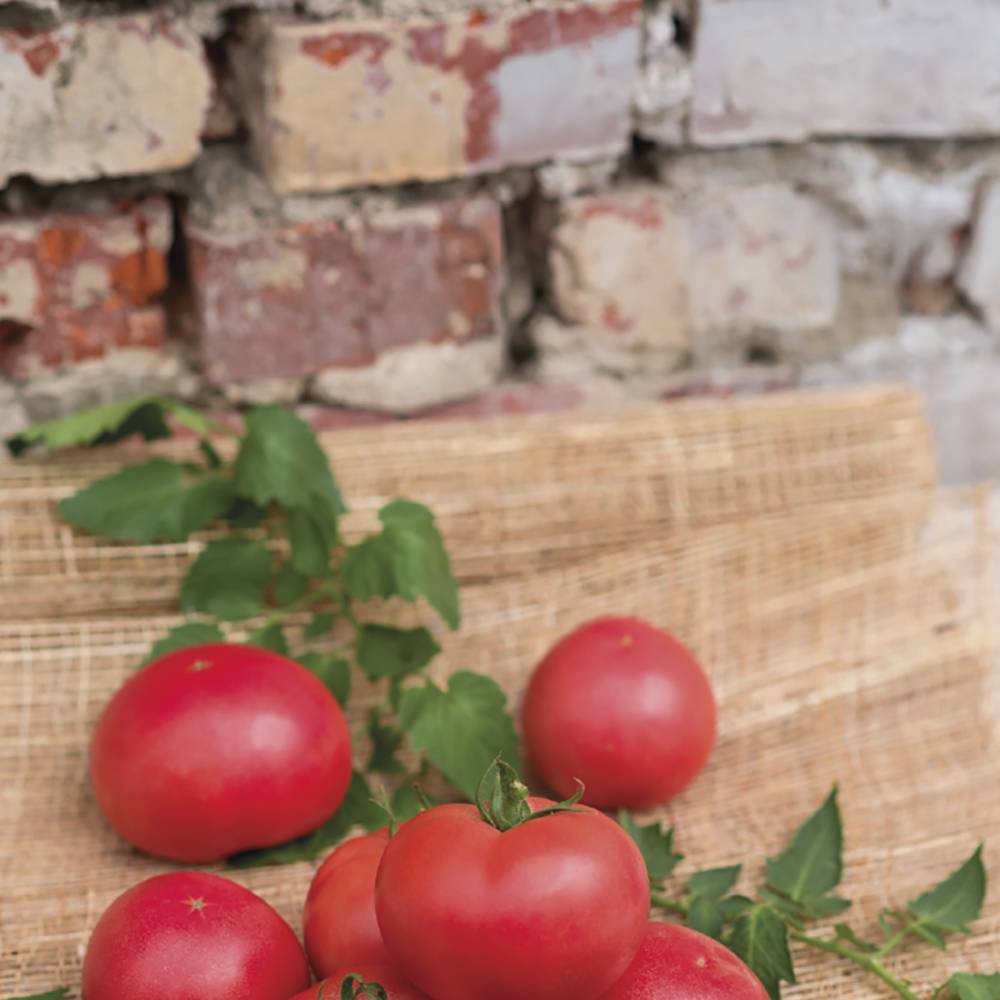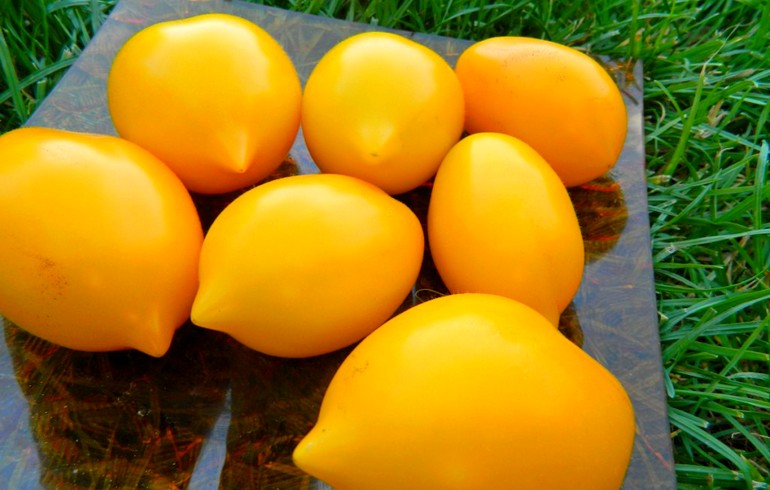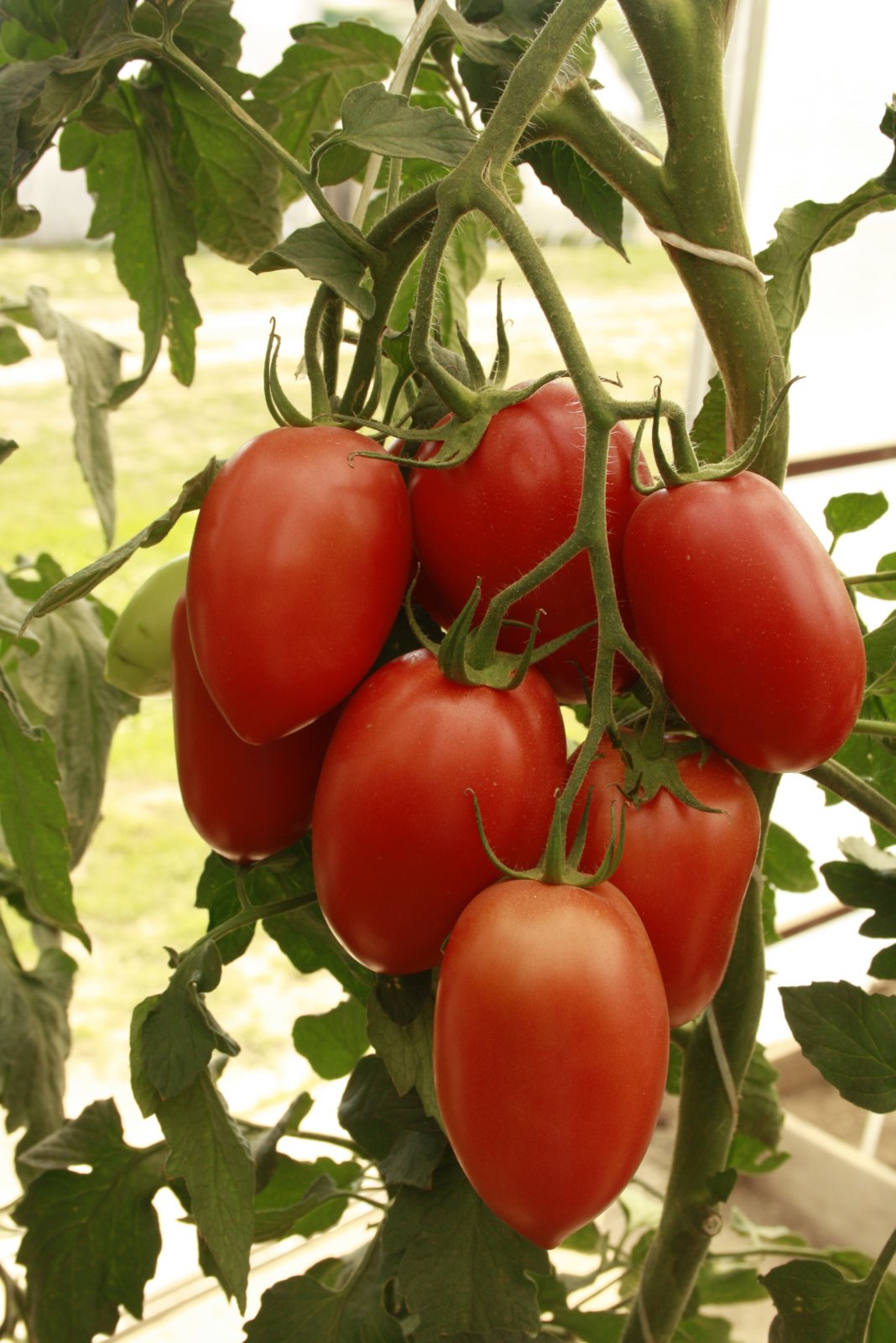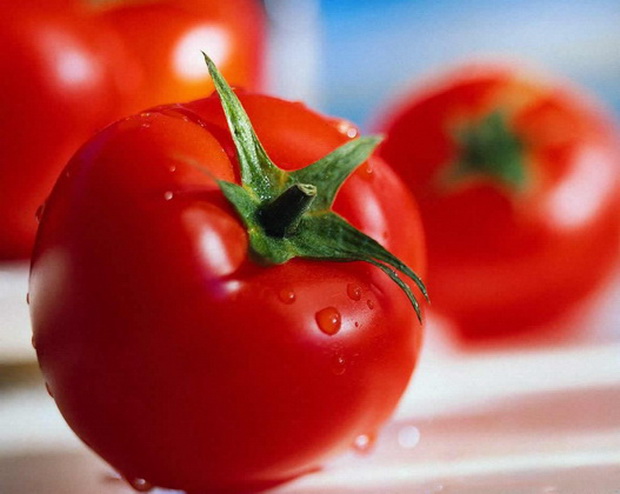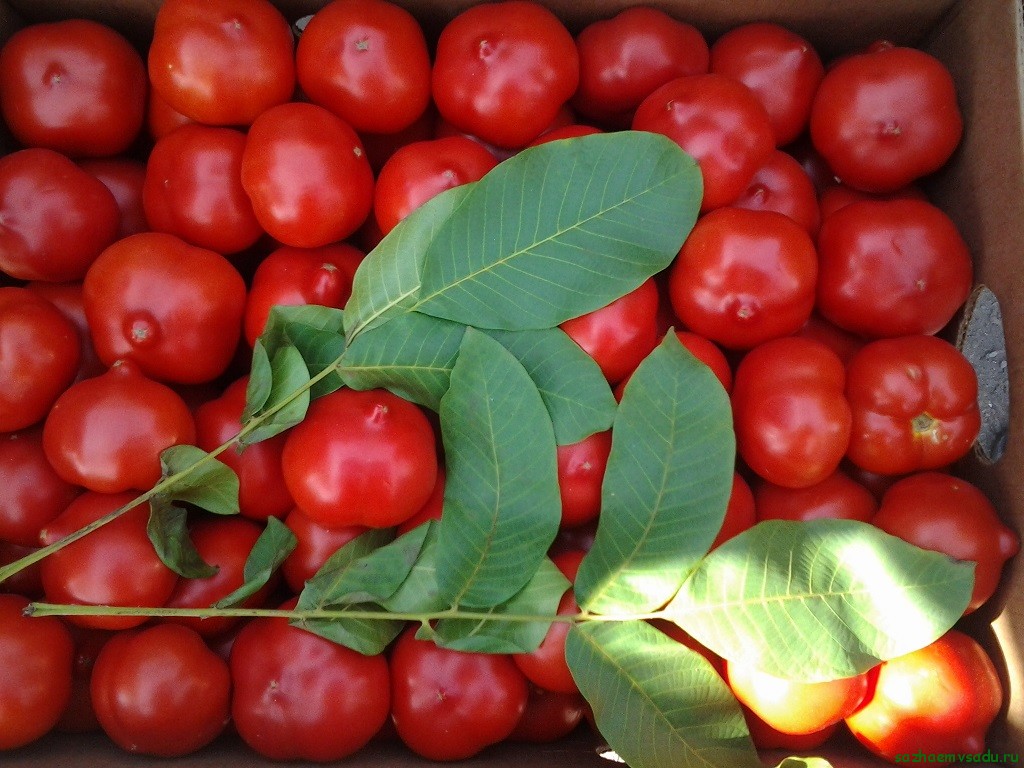Content:
Ultra-early, compact, bee-pollinated determinant hybrids Lux F1 and Lux Prima were created by the Research Center for Selection, Seed Production and Agricultural Engineering. They are also united by the appearance of the fruits, unpretentiousness to growing conditions, early ripening and high yield.
Tomato Lux: characteristics and description of the variety
Large red flat-rounded fruits weigh 100-120 g, and the yield reaches 18 kg per 1 m2. Their juiciness and sweetness have earned fame as one of the best options for growing in personal plots.
Bushes with a large volume of green mass grow up to 130-150 cm in height, so they can be used for harvesting in greenhouse conditions while providing access to insects for pollination. Brushes with 6-7 flowers are laid after 7-9 leaves, and then every 2 more leaves.
Growing features
Lux tomatoes can be sown directly on the garden bed or under a film. In this case, the soil must be completely thawed and warmed up to 10 ° C. This usually happens no earlier than the first ten days of May, but it all depends on local conditions.
With the seedling method, sowing is performed 3 weeks earlier. You can sow in a common box, and in the phase of 2-3 leaves, pick.
Sowing
Like others, this cultivar prefers fertile, well-drained soils. If the soil in the beds is too heavy, it is recommended to add a little sand along with organic fertilizers during the autumn digging in the previous year.
The seeds must be soaked a day before sowing. This procedure allows you to significantly accelerate the emergence of seedlings, as well as to reject all non-viable seeds at once. Embedding in the soil is performed at a shallow depth - a maximum of 2 cm. For seedlings, use cups with a diameter of about 8 cm, on the bottom of which eggshells are placed.
The seedlings are hardened a week before planting in the ground. The pots are aired daily by opening a window above them.
The recommended planting scheme for beds is 70 × 40 cm, that is, the optimal density is 6-7 plants per 1 m2. Only in this case, large bushes will not interfere with each other. Ordinary trellises are suitable for a garter,
Care
Tomatoes are very sensitive to soil debris. Therefore, weeding must be done regularly. At the same time, the soil will be loosened, which is extremely important for artificial irrigation. The Lux variety is not very picky about watering. It is enough to moisten the bushes well 1-2 times a week at the rate of 10 liters of water for each.
Top dressing will allow you to get a more bountiful harvest. If a sufficient amount of organic matter has been introduced into the soil since autumn, then during the season it will only be necessary to use any complex mineral fertilizer or humate fertilizer 2-3 times during watering.
Harvesting
The first 2-3 harvests 90 days after the emergence of seedlings allow you to remove more than half of the entire crop. For this amicability of ripening, the variety is popular with those who grow tomatoes for sale. Fully ripe fruits do not have any spots, including green ones at the stalk. Good skin density facilitates transportation and storage of tomatoes for long-term storage.
Advantages and disadvantages
The most important are the following advantages of the Lux variety:
- Good resistance to Alternaria, Fusarium, TMV;
- Cold resistance;
- Good transportability;
- Early ripening;
- Great taste.
Obviously, the advantages outweigh the disadvantages and this variety should be allocated a place on the site.
